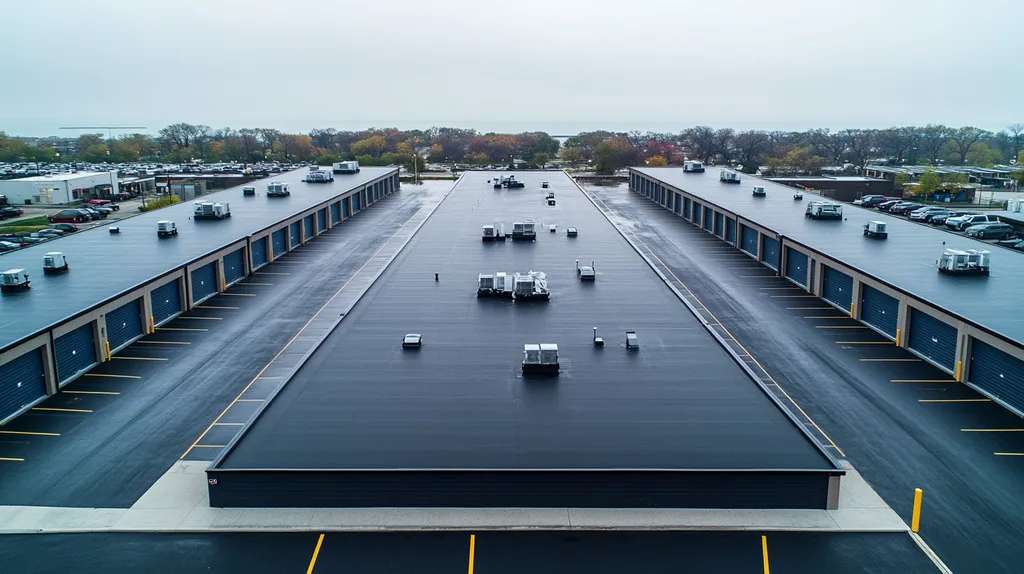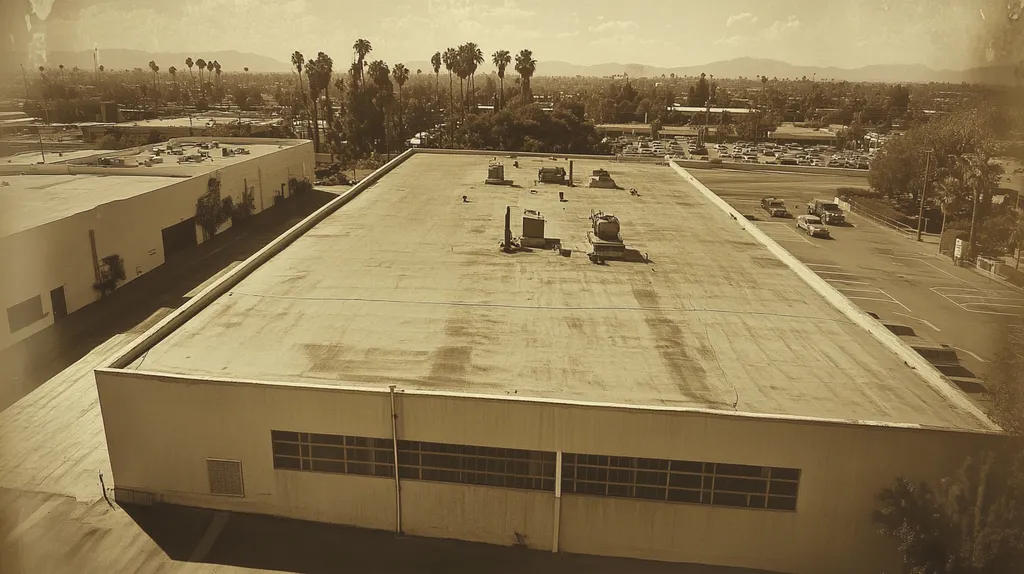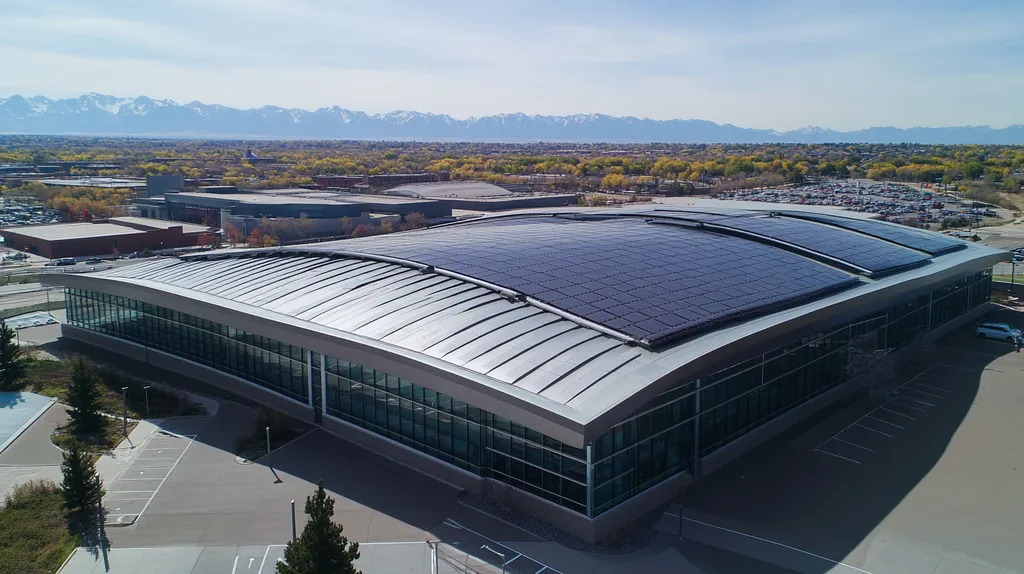Welcome to today’s Battle Royale featuring two roofing heavyweights: “Polyurethane” in the east corner versus “Silicone Bonding Agents” in the west!
Tonight’s showdown pits these contenders against each other across six punishing rounds designed to test every aspect of their performance for Commercial Roof Coatings.
At stake? Millions in potential costs, decades of building protection, and the critical performance demands of modern commercial and industrial facilities.
Our professional judging panel will evaluate each round on technical merit, real-world performance, and value delivery. After all six rounds, we’ll declare our ultimate champion.
Ladies and gentlemen, facility managers and building owners… it’s time to rumble!
ROUND 1: INITIAL COSTS & INSTALLATION
When selecting bonding agents for commercial roof coatings, the initial investment and installation process can make or break a project’s success. Research shows that up to 30% of roof coating failures stem from improper bonding agent selection and application methods. Understanding the cost implications, installation requirements, and timeline factors of polyurethane and silicone bonding agents is essential for making informed decisions that protect both the building and bottom line.
Material Expenses
In commercial roofing projects, bonding agent costs typically represent 15-25% of the total coating system expenses. Polyurethane bonding agents generally cost 30-40% less per square foot than their silicone counterparts, making them an attractive option for budget-conscious projects.
Silicone bonding agents command premium pricing due to their superior chemical properties and enhanced adhesion capabilities. These agents provide excellent adhesion to existing surfaces and maintain high elasticity throughout their service life. (source: FacilitiesNet)
While volume discounts can help offset costs for larger projects, polyurethane bonding agents consistently offer better initial value. This cost advantage makes polyurethane the clear winner in material expenses, particularly for projects with strict budget constraints.
Installation Complexity
Installation complexity directly impacts labor costs and project success rates. Polyurethane bonding agents feature straightforward application methods and can be applied across a broader temperature range, reducing the risk of installation errors.
These agents also demonstrate greater tolerance for minor surface imperfections and varying substrate conditions. Their forgiving nature allows installation teams to maintain steady progress even when working conditions aren’t optimal.
Silicone bonding agents require more precise surface preparation and environmental conditions for proper application. Their sensitivity to moisture and temperature fluctuations can complicate the installation process, leading to longer preparation times and increased labor costs.
Given their easier application process and broader installation window, polyurethane bonding agents hold the advantage in installation complexity.
Project Timeline
Project duration significantly impacts facility operations and overall costs. Polyurethane bonding agents typically require 24-48 hours for full curing, allowing for faster project completion and minimal disruption to building operations.
These agents also permit faster recoating intervals, enabling installation teams to apply subsequent layers more quickly. This efficiency can reduce total project duration by 20-30% compared to alternative solutions.
Silicone bonding agents often demand longer curing periods and specific environmental conditions throughout the installation process. Weather dependencies and strict application requirements can extend project timelines by several days or even weeks.
In terms of project timeline efficiency, polyurethane bonding agents demonstrate clear superiority through faster curing times and more flexible application schedules.
ROUND 1 WINNER: POLYURETHANE
ROUND 2: DURABILITY & LIFESPAN
The durability and lifespan of roofing bonding agents directly impact long-term facility costs and protection. Studies show that premature bonding agent failure leads to coating system breakdown within 3-5 years, resulting in expensive remediation and potential water damage. Understanding how polyurethane and silicone bonding agents perform over time is crucial for making cost-effective roofing decisions.
Weather Resistance
Weather resistance determines how well bonding agents maintain their protective properties under harsh conditions. UV exposure, temperature fluctuations, and precipitation can significantly impact bonding agent performance over time.
Polyurethane bonding agents demonstrate exceptional resistance to temperature extremes and mechanical stress. Their molecular structure allows them to maintain flexibility and adhesion even after years of thermal cycling, making them ideal for climates with significant temperature variations.
Silicone bonding agents excel in UV resistance and maintain their properties when exposed to intense sunlight. They provide excellent adhesion to existing surfaces and demonstrate high elasticity throughout their service life. (source: FacilitiesNet)
Both options demonstrate strong weather resistance capabilities, making this category a TIE.
Chemical Stability
Chemical stability affects how bonding agents resist degradation from environmental pollutants and chemical exposure. This factor directly influences the coating system’s ability to maintain its protective properties over time.
Polyurethane bonding agents show superior resistance to chemical exposure, including industrial emissions and acid rain. Their chemical structure remains stable even when exposed to harsh cleaning agents and environmental contaminants.
Silicone bonding agents, while resistant to many chemicals, can show signs of degradation when exposed to certain industrial pollutants. Their performance may decline more rapidly in areas with high chemical exposure.
Polyurethane holds the ADVANTAGE in chemical stability.
Physical Durability
Physical durability encompasses resistance to mechanical stress, foot traffic, and impact damage. These factors significantly affect maintenance requirements and long-term performance.
Polyurethane bonding agents excel in abrasion resistance and can withstand regular foot traffic without showing significant wear. Their high tensile strength prevents damage from typical rooftop maintenance activities.
Silicone bonding agents, while flexible, show lower resistance to mechanical abuse and can be more susceptible to physical damage. Their softer nature makes them more prone to scratching and gouging during routine maintenance.
For physical durability, polyurethane demonstrates clear ADVANTAGE.
ROUND 2 WINNER: Polyurethane
ROUND 3: PERFORMANCE FACTORS
Performance factors can make or break a commercial roof coating system’s success. Industry data shows that 40% of premature roof coating failures stem from poor bonding agent performance, leading to costly repairs and potential water damage. Understanding how polyurethane and silicone bonding agents perform across key metrics helps facility managers avoid expensive mistakes and ensure long-term roof protection.
Adhesion Strength
Adhesion strength directly impacts a coating system’s ability to maintain protection over time. Poor adhesion leads to delamination, allowing moisture penetration and accelerating substrate deterioration.
Polyurethane bonding agents demonstrate exceptional adhesion across multiple substrate types, including metal, concrete, and modified bitumen. Their chemical structure creates strong molecular bonds that resist separation even under extreme stress conditions.
Silicone bonding agents offer excellent adhesion and maintain high elasticity throughout their service life. These agents excel particularly in situations with significant thermal movement and provide reliable long-term performance. (source: FacilitiesNet)
Given their broader substrate compatibility and stronger molecular bonding, polyurethane agents earn the ADVANTAGE in adhesion strength.
Moisture Resistance
Moisture resistance determines how well bonding agents maintain their protective properties when exposed to water. This factor is crucial for preventing coating failure and substrate damage in wet conditions.
Polyurethane bonding agents create a highly water-resistant barrier that actively repels moisture. Their chemical composition prevents water absorption and maintains bond strength even during prolonged exposure to humidity.
Silicone bonding agents show excellent initial water resistance but can deteriorate under constant moisture exposure. While they handle occasional water contact well, extended ponding can compromise their adhesive properties over time.
For moisture resistance, polyurethane demonstrates clear ADVANTAGE.
Temperature Performance
Temperature performance affects how bonding agents maintain their properties across seasonal changes. Poor temperature stability can lead to coating separation and premature system failure.
Polyurethane bonding agents maintain flexibility and adhesion across a wide temperature range. They resist brittleness in cold conditions and maintain stability in high heat, making them suitable for varied climates.
Silicone bonding agents excel in extreme temperature conditions, particularly in high-heat environments. Their molecular structure allows them to maintain consistent properties despite thermal cycling.
Both options demonstrate excellent temperature performance, resulting in a TIE.
ROUND 3 WINNER: POLYURETHANE
ROUND 4: MAINTENANCE REQUIREMENTS
Maintenance requirements can significantly impact the total cost of ownership for commercial roof coating systems. Industry data shows that inadequate maintenance leads to 65% of premature coating failures, resulting in repairs that cost 3-4 times more than routine upkeep. Understanding the distinct maintenance needs of polyurethane and silicone bonding agents helps facility managers optimize their resources and protect their roofing investments.
Regular Inspection Requirements
Inspection frequency and complexity directly affect maintenance budgets and staff resources. Regular evaluations help identify potential issues before they escalate into costly repairs.
Polyurethane bonding agents require quarterly inspections to check for surface wear, particularly in high-traffic areas. These systems need careful examination of seams and termination points where stress concentrations can lead to adhesion failure.
Silicone bonding agents typically need only bi-annual inspections due to their superior weathering characteristics. Their self-cleaning properties and resistance to biological growth reduce the complexity of inspection procedures.
Given their lower inspection demands and simpler evaluation protocols, silicone bonding agents show clear ADVANTAGE in this category.
Cleaning Protocols
Proper cleaning maintains coating performance and extends system longevity. The complexity and frequency of cleaning procedures significantly impact maintenance costs.
Polyurethane coatings require monthly cleaning to prevent dirt accumulation and maintain reflectivity. These systems need specialized cleaning agents and careful pressure control to avoid surface damage during maintenance.
Silicone coatings feature natural dirt-shedding capabilities that minimize cleaning requirements. Their smooth surface texture and chemical stability allow for simple washing procedures with standard equipment.
Silicone’s self-cleaning properties and simplified maintenance protocols give it the ADVANTAGE in cleaning requirements.
Repair Procedures
Repair complexity affects both maintenance costs and system reliability. The ease of performing repairs impacts labor requirements and facility downtime.
Polyurethane bonding agents demonstrate excellent repairability with strong adhesion between new and existing materials. Their consistent curing properties allow for reliable patch repairs without extensive surface preparation.
Silicone bonding agents present challenges in repair situations due to their poor inter-coat adhesion. This characteristic often requires additional surface treatments and specialized products to achieve proper bonding in repair areas.
For repair procedures, polyurethane shows clear ADVANTAGE.
ROUND 4 WINNER: TIE
ROUND 5: SUSTAINABILITY CREDENTIALS
Environmental impact and sustainability have become critical factors in commercial roofing decisions, with studies showing that non-sustainable materials can increase lifetime costs by up to 40%. As regulations tighten and environmental certifications become mandatory, selecting the right bonding agent impacts both compliance and operational costs. Understanding how polyurethane and silicone bonding agents measure up against modern sustainability metrics helps facility managers make future-proof decisions.
Environmental Impact
The manufacturing process and chemical composition of bonding agents directly affect their environmental footprint. These factors influence both immediate environmental impact and long-term sustainability compliance.
Polyurethane bonding agents traditionally carry a higher environmental burden due to their petroleum-based components and VOC emissions during manufacture. While newer formulations have reduced these impacts, the production process remains energy-intensive.
Silicone bonding agents demonstrate superior environmental credentials through lower VOC emissions and reduced energy requirements during production. Their inert chemical composition results in minimal environmental impact throughout their lifecycle.
For environmental impact considerations, silicone shows clear ADVANTAGE.
Resource Efficiency
Resource efficiency encompasses material longevity, reuse potential, and waste generation during installation and maintenance. These factors significantly impact the overall sustainability profile of roofing systems.
Polyurethane bonding agents require more frequent reapplication in challenging environments, increasing material consumption over time. Their application process also generates more waste due to strict mixing requirements and limited pot life.
Silicone bonding agents were initially developed for sprayed-in-place applications but now serve multiple roof membrane types with minimal waste. Their single-component nature and longer shelf life reduce material waste significantly. (source: FacilitiesNet)
In terms of resource efficiency, silicone demonstrates clear ADVANTAGE.
Long-term Sustainability
Long-term sustainability considers the material’s ability to maintain performance while minimizing environmental impact over its entire service life. This includes factors like maintenance requirements and end-of-life disposal.
Polyurethane bonding agents require more intensive maintenance procedures and often need chemical cleaners that can impact local environments. Their disposal at end-of-life presents additional environmental challenges.
Silicone bonding agents maintain their properties longer with minimal maintenance, reducing the need for environmentally harmful cleaning products. Their chemical stability also simplifies end-of-life handling and disposal.
For long-term sustainability, silicone shows clear ADVANTAGE.
ROUND 5 WINNER: SILICONE
ROUND 6: SPECIALIZED APPLICATIONS
Specialized roofing applications represent a critical decision point for facility managers, with studies showing that mismatched bonding agents can reduce roof lifespans by up to 40% in challenging environments. Research indicates that 35% of premature coating failures occur when bonding agents aren’t properly matched to specific environmental conditions or usage requirements. Understanding how polyurethane and silicone bonding agents perform in specialized scenarios is essential for maximizing roof protection and longevity.
Environmental Resistance
Environmental resistance determines how bonding agents perform under specific exposure conditions. Chemical exposure, UV radiation, and atmospheric pollutants can significantly impact coating system longevity.
Polyurethane bonding agents demonstrate exceptional resistance to chemical exposure and provide superior impact resistance in high-traffic areas. Their molecular structure creates a durable barrier against industrial emissions and harsh cleaning agents. (source: FacilitiesNet)
Silicone bonding agents excel in environments with high moisture exposure and intense UV radiation. Their chemical composition remains stable under prolonged sun exposure, making them ideal for exposed roofing applications.
Given their broader resistance profile and superior chemical protection, polyurethane shows clear ADVANTAGE in environmental resistance.
Surface Compatibility
Surface compatibility affects how bonding agents perform on different roofing substrates. Poor substrate matching can lead to adhesion failure and premature coating breakdown.
Polyurethane bonding agents demonstrate excellent adhesion across multiple substrate types, including metal, concrete, and modified bitumen. Their versatile chemistry allows for strong bonds even on challenging surfaces.
Silicone bonding agents show limited compatibility with certain substrates and often require specialized primers. Their adhesion properties can be compromised on surfaces with residual contamination or irregular textures.
For surface compatibility, polyurethane demonstrates clear ADVANTAGE.
Application Requirements
Specialized applications often demand specific installation conditions and techniques. Understanding these requirements ensures successful coating system performance.
Polyurethane bonding agents require strict moisture control and temperature ranges during application. Their sensitivity to environmental conditions can limit installation windows and increase project complexity.
Silicone bonding agents offer greater flexibility in application conditions and can be installed across a broader range of temperatures and humidity levels. Their single-component nature simplifies specialized installations.
Given their more forgiving application parameters, silicone shows clear ADVANTAGE in application requirements.
ROUND 6 WINNER: TIE
AND THE WINNER IS…
After six grueling rounds of technical comparison, we have our verdict, ladies and gentlemen! With three clear round victories, one defeat, and two ties, POLYURETHANE claims the championship belt in this roofing showdown!
Polyurethane dominated the early rounds with superior cost-effectiveness, outstanding durability, and exceptional performance metrics. Its versatility across different substrates and excellent chemical resistance proved decisive in specialized applications.
But don’t count silicone out of the fight! This formidable contender showed its strength in sustainability credentials and proves particularly valuable in high-UV environments and applications requiring minimal maintenance.
IMPORTANT NOTICE: While this match-up provides valuable insights, every building faces unique challenges. Local climate conditions, substrate characteristics, and specific facility requirements can significantly impact bonding agent performance. Property owners and managers should always consult qualified roofing professionals who can evaluate their specific situation before making final decisions.
In the high-stakes arena of commercial roofing, victory doesn’t just come from picking the overall champion – it comes from selecting the right contender for your specific battle. Choose wisely, and may your roof reign supreme for years to come!
FREQUENTLY ASKED QUESTIONS
Q. What are the initial installation costs for commercial roofs?
A. The initial installation costs for bonding agents can vary significantly. Polyurethane agents generally cost 30-40% less per square foot than silicone agents, making them more attractive for budget-conscious projects. However, installation complexity and labor costs also play a crucial role in the overall expense.
Q. How do the durability and lifespan of bonding agents compare?
A. The durability and lifespan of bonding agents are critical for long-term costs. Polyurethane agents generally perform better under temperature extremes and mechanical stress, resulting in a longer service life. Silicone agents excel in UV resistance, but their longevity can be compromised in certain conditions.
Q. What performance factors should I consider for commercial roofs?
A. Key performance factors include adhesion strength, moisture resistance, and temperature performance. Polyurethane typically offers stronger adhesion across varied substrates and better moisture resistance. Both types show excellent temperature performance, making this a category without a clear winner.
Q. What are the maintenance requirements for bonding agents?
A. Maintenance requirements impact total cost significantly. Polyurethane systems require more frequent inspections and monthly cleaning for optimal performance. In contrast, silicone bonding agents have lower inspection and simpler cleaning protocols, making them less demanding over time.
Q. How do sustainability credentials vary between bonding agents?
A. Sustainability credentials are crucial, especially as regulations tighten. Silicone agents generally have lower environmental impact due to reduced VOC emissions and energy-efficient production. Polyurethane, while effective, often carries a higher environmental burden due to its petroleum-based components.
Q. Are there specialized applications for silicone vs. polyurethane bonding agents?
A. Yes, specialized applications require careful selection. Polyurethane agents excel in chemical resistance and impact durability, making them suitable for high-traffic areas. Silicone bonding agents perform well in high-moisture and UV-rich environments, making them ideal for exposed roofing.
Q. How do I choose the right bonding agent for my commercial roof?
A. Choosing the right bonding agent involves assessing various factors such as project costs, environmental conditions, and specific performance needs. Consult roofing professionals to evaluate your roof’s unique conditions and to determine whether polyurethane or silicone is more suitable for your requirements.











